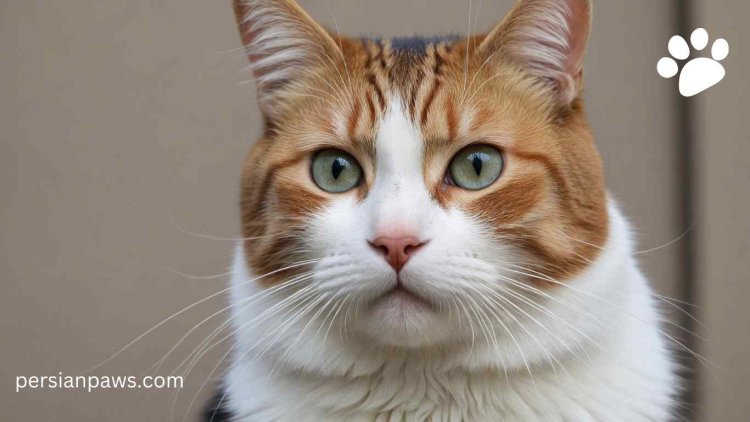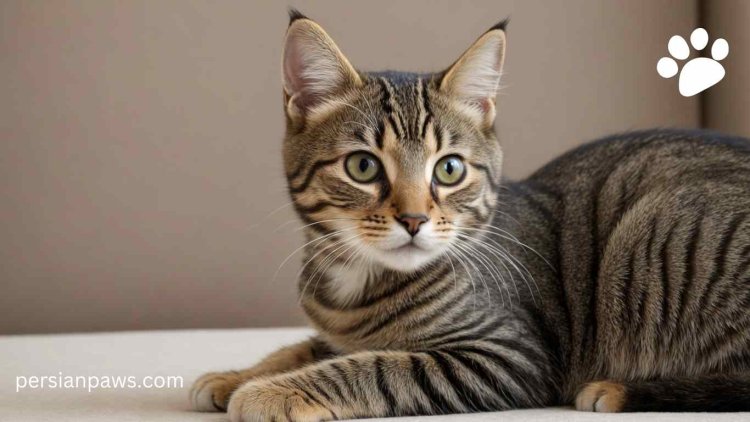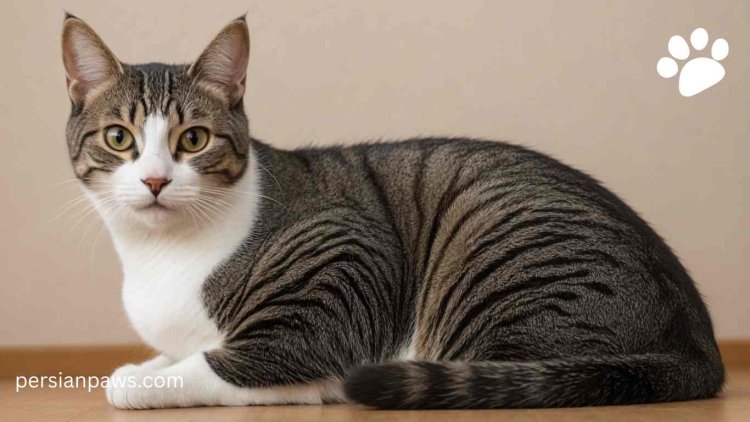Why Would My Cat's Eye Be Watering? Eye Discharge in Cats
Your cat's breath might smell bad due to dental problems like plaque, tartar, or gum disease. It could also be from something your cat ate.

Table of Contents
- Common Eye Problems in Cats
- Causes of Watery Eyes in Cats
- Symptoms to Look Out For in a Cat with Watery Eyes
- Seeking Veterinary Care for Eye Issues
- How to Prevent Eye Problems in Cats
- Treatment Options for Watery Eyes in Cats
- Real-Life Cat Owner Experiences with Cat Eye Discharge
- When to Know if Your Cat’s Eye Discharge Is an Emergency
- Frequently Asked Questions
- Conclusion
- References
If you’re a cat owner or pet lover, noticing that your cat's eyes are watering can be worrying. Eye discharge in cats is very common and can happen for many reasons, ranging from minor irritations to more serious health problems.
In this simple guide, we’ll explore the causes, symptoms, prevention, and treatment options for watery eyes in cats.
Common Eye Problems in Cats
Cats, like all animals, can have various eye problems. Some of the most common eye issues in cats include:
● Conjunctivitis (pink eye): Swelling of the pink part inside the eyelids.
● Corneal Ulcers: Open sores on the clear part of the eye, often caused by injury or infections.
● Glaucoma: Increased pressure in the eye, leading to vision loss if untreated.
● Cataracts: Clouding of the eye’s lens, which can block vision. ● Uveitis: Swelling of the middle part of the eye.
While some of these conditions can cause eye discharge, watery eyes are a specific symptom that may have different causes.
Causes of Watery Eyes in Cats
Allergies
Just like humans, cats can have allergies. Common allergens include pollen, dust, mold,
and certain foods. When a cat is exposed to an allergen, it can cause their eyes to water as part of an allergic reaction.
Infections
Bacterial, viral, and fungal infections can lead to eye discharge. Common infectious agents include:
● Feline Herpesvirus (FHV-1): Causes upper respiratory infections and pink eye.
● Chlamydia: A bacterial infection causing eye swelling.
● Mycoplasma: Another bacterial agent that can cause pink eye.
Injuries
Physical trauma to a cat’s eye, such as scratches or foreign bodies like dust or debris, can result in watery eyes. Immediate veterinary attention is crucial to prevent further problems.
Blocked Tear Ducts
Tear ducts can become clogged, preventing tears from draining properly and causing them to accumulate and spill over.
Eye Diseases
Conditions like glaucoma and uveitis can lead to watery eyes. These diseases typically require long-term management and veterinary care.
Other Causes
● Entropion (inward rolling of the eyelid)
● Ectropion (outward rolling of the eyelid)
● Dry Eye Syndrome (Keratoconjunctivitis Sicca)
Symptoms to Look Out For in a Cat with Watery Eyes
Apart from the obvious sign of watery eyes, several other symptoms may indicate an underlying issue:
● Redness or swelling around the eyes
● Squinting or blinking more than usual
● Discharge that is cloudy, yellow, or green
● Rubbing or pawing at the eyes
● Changes in eye appearance, like cloudiness or color changes
Seeking Veterinary Care for Eye Issues
If your cat’s eyes are persistently watering or you notice any of the above symptoms, it’s essential to seek veterinary care promptly. Eye conditions can worsen quickly, leading to more severe problems and even vision loss if not treated. Your veterinarian will conduct a thorough examination to determine the cause and recommend appropriate treatment.
How to Prevent Eye Problems in Cats
Regular Grooming
Keeping your cat’s face clean can help prevent irritants from causing eye issues. Use a damp cloth to gently wipe around their eyes, especially for breeds prone to tear staining.
Health Checks
Regular vet visits are crucial for catching potential eye problems early. During these check-ups, your vet can perform eye exams and recommend preventive measures.
Monitor Environment
Reduce exposure to allergens by keeping your home clean and dust-free. Use air purifiers and avoid smoking around your cat.
Treatment Options for Watery Eyes in Cats
The treatment for your cat’s watery eyes will depend on the underlying cause:
Allergies
● Antihistamines or steroids may be prescribed.
● Allergen avoidance is essential.
Infections
● Antibiotic or antiviral medications for bacterial or viral infections.
● Eye drops or ointments to reduce swelling and soothe the eyes.
Injuries
● Immediate veterinary care to remove foreign bodies and treat injuries.
● Antibiotics to prevent secondary infections.
Injuries
● Immediate veterinary care to remove foreign bodies and treat injuries.
● Antibiotics to prevent secondary infections
Blocked Tear Ducts
● Flushing of tear ducts to remove blockages.
● Surgery in severe cases.
Real-Life Cat Owner Experiences with Cat Eye Discharge
Sophie’s Story
Sophie, a 5-year-old Siamese, developed persistent watery eyes. Her owner noticed the issue and took her to the vet, where it was discovered that she had a blockage in her tear duct.
A minor surgical procedure was required to correct the issue, and Sophie’s eyes have been clear since.
Max’s Experience

Max, a 3-year-old tabby, experienced sudden eye discharge. His owner, Emily, quickly sought veterinary help. It turned out to be a bacterial infection.
With prompt treatment, Max’s eyes cleared up, preventing further problems.
Oliver’s Allergy
Oliver, a 7-year-old Maine Coon, suffered from seasonal allergies that often resulted in watery eyes.
His owner, Alex, identified the triggers and manages his allergies with a combination of antihistamines and environmental controls.
Bella’s Injury

Bella, a 2-year-old domestic shorthair, got into a scuffle with another cat, resulting in a small injury near her eye. The injury led to watery eyes.
Her owner took her to the vet immediately, where she received treatment to prevent infection and promote healing.
When to Know if Your Cat’s Eye Discharge Is an Emergency
While some eye discharge can be managed at home, certain signs indicate that immediate veterinary care is necessary:
● Sudden onset of severe symptoms
● Inability to open the eye
● Blood in the discharge
● Visible foreign object in the eye
If you notice any of these signs, seek veterinary attention immediately.
Frequently Asked Questions
What causes watery eyes in cats?
Watery eyes in cats can be caused by allergies, infections, injuries, blocked tear ducts, or eye diseases.
Can I use human eye drops on my cat?
No, it's not recommended to use human eye drops on your cat without veterinary guidance, as they may contain ingredients harmful to cats. How can I prevent my cat’s eyes from watering?
Regular grooming, maintaining a clean environment, and frequent vet check-ups can help prevent eye issues in cats.
Is eye discharge in cats contagious?
It depends on the underlying cause. Infectious agents like viruses and bacteria can be contagious to other cats.
Conclusion
Eye health is a crucial aspect of your cat’s overall well-being. By understanding the causes, symptoms, and treatment options for watery eyes, you can ensure your feline friend stays healthy and happy. If you’re concerned aboaut your cat’s eye discharge, don’t hesitate to seek veterinary care. Prevention, timely intervention, and proper care are key to maintaining your cat’s eye health.
References
● American Association of Feline Practitioners
● Cornell Feline Health Center
● The Ohio State University College of Veterinary Medicine
What's Your Reaction?















